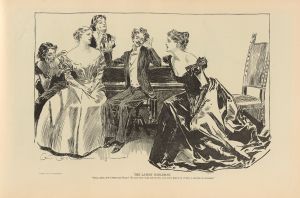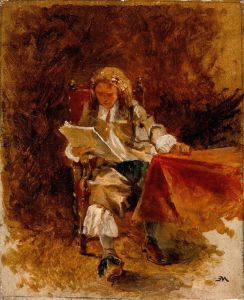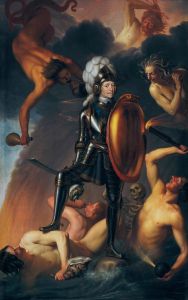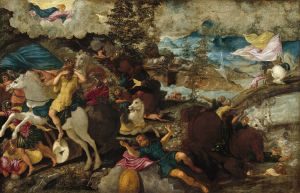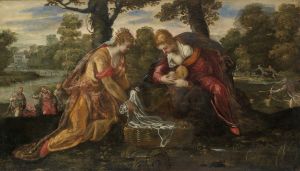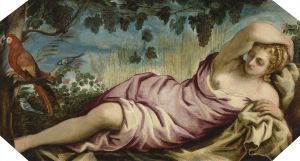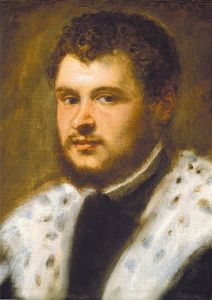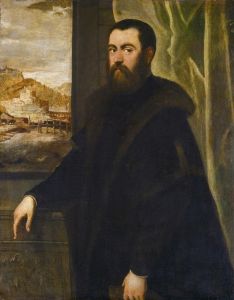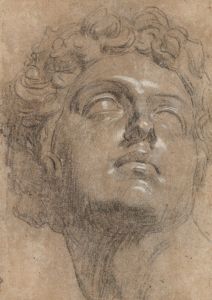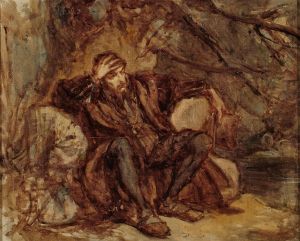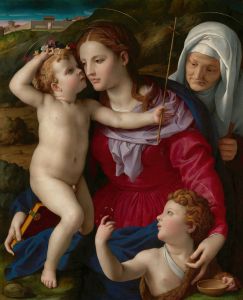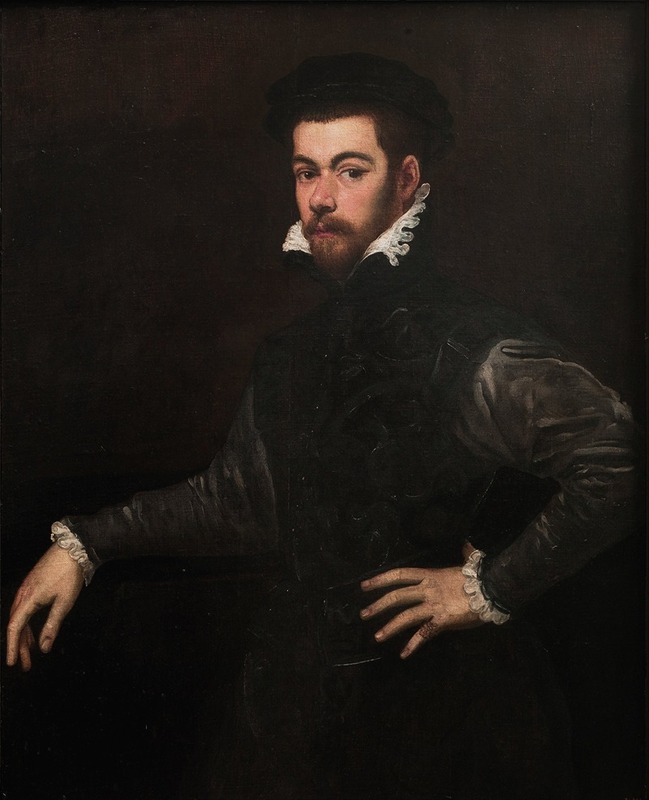
Portrait of a Gentleman
A hand-painted replica of Jacopo Tintoretto’s masterpiece Portrait of a Gentleman, meticulously crafted by professional artists to capture the true essence of the original. Each piece is created with museum-quality canvas and rare mineral pigments, carefully painted by experienced artists with delicate brushstrokes and rich, layered colors to perfectly recreate the texture of the original artwork. Unlike machine-printed reproductions, this hand-painted version brings the painting to life, infused with the artist’s emotions and skill in every stroke. Whether for personal collection or home decoration, it instantly elevates the artistic atmosphere of any space.
Jacopo Tintoretto, an eminent Italian painter of the late Renaissance, is renowned for his dynamic compositions and vigorous brushwork. Among his numerous works, "Portrait of a Gentleman" stands as a testament to his skill in portraiture, a genre that, while not the primary focus of his oeuvre, showcases his ability to capture the essence of his subjects with remarkable insight and precision.
"Portrait of a Gentleman" is believed to have been painted in the mid-16th century, a period when Tintoretto was actively working in Venice, his birthplace and lifelong home. The painting exemplifies the Mannerist style, characterized by its elongated forms and dramatic use of color and light, which Tintoretto adeptly employed to convey the personality and status of the sitter.
The subject of the portrait is an unidentified gentleman, a common occurrence in Tintoretto's portraits, as many of the individuals he painted were members of the Venetian elite whose identities were not always documented. The gentleman is depicted with a composed and dignified demeanor, dressed in the fashion typical of the Venetian nobility of the time. His attire, likely consisting of rich fabrics and possibly adorned with subtle embellishments, reflects his social standing and wealth.
Tintoretto's approach to portraiture was distinctive for its psychological depth. In "Portrait of a Gentleman," the artist captures not only the physical likeness of the sitter but also imbues the work with a sense of the individual's character and presence. The use of chiaroscuro, a technique involving the contrast of light and shadow, enhances the three-dimensionality of the figure and adds a dramatic intensity to the composition. This technique, combined with Tintoretto's fluid brushwork, brings a sense of vitality and immediacy to the portrait.
The background of the painting is typically understated, allowing the focus to remain on the sitter. This simplicity serves to highlight the gentleman's features and attire, drawing the viewer's attention to the subtle details that Tintoretto meticulously rendered. The artist's skillful use of color and light further accentuates the textures and forms within the painting, creating a harmonious balance between the subject and his surroundings.
While "Portrait of a Gentleman" may not be as widely recognized as some of Tintoretto's larger-scale religious and mythological works, it remains an important example of his contribution to portraiture. The painting reflects the cultural and artistic milieu of Renaissance Venice, a city that was a thriving center of commerce, art, and intellectual exchange during Tintoretto's lifetime.
In summary, "Portrait of a Gentleman" by Jacopo Tintoretto is a masterful representation of Renaissance portraiture, capturing the essence of its subject with both technical skill and emotional depth. Through this work, Tintoretto demonstrates his ability to transcend mere likeness, offering a glimpse into the personality and status of the Venetian elite.





